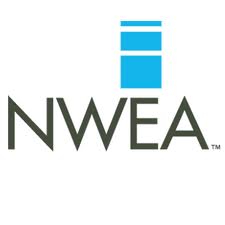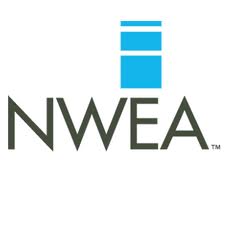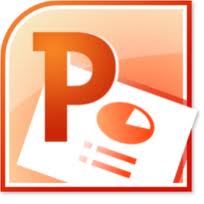Reflect on the critical design decisions and the critical pedagogical decisions you’ve made in the creation of your online course. Explain the theoretical foundations that have grounded your online course design process. Also, tell your audience (i.e., would-be online course designers) about the pitfalls you encountered and how to avoid making the same mistakes.
My online course was created for 3rd Grade students at a small rural school where most students have limited connectivity anywhere other than school. I decided to focus on the topic of Online Safety because a large population of my students do not have home computers or a reliable internet connection but a lot of them do have access to cell phones and electronic devices and this subject matter is applicable to those devices as well. Because most of the 3rd Grade students I created this class for have very little online experience my most important goal in designing this course was to keep it simple. Reanut, et. al. (2006) recommends that teachers “conceptualize resources fluidly and organize materials effectively” and by creating a course that includes lessons that follow a prescribed pattern I am hoping that my students will have little difficulty following the consistent lesson flow I built into the course. I also felt that because this subject matter and the forum that it is presented in are such new concepts to my students that building in a lot of collaborative activities would be important. I included a lot of discussion forum activities that require students to respond thoughtfully to questions regarding the content of the course in the hopes of “inducing increased cognitive effort and reflection” (Murphy, et. al., 2011). These activities also require students to thoughtfully respond to their classmates posts as well, in the hopes that enriching conversations will occur. In planning activities of this type I am really able to kill two birds with one stone. Not only are students collaborating and reflecting but they are also learning how to use an important online tool that they will encounter many times as they progress through school. The activities I have included in this online course such as discussion forums, email activities, and Wiki projects all work to teach my students about online safety while at the same time teaching them how to use discussion forums, email systems, Wikis, and practice keyboarding skills in one stroke. The pitfalls in this process were relatively simple to overcome. I initially thought that using a familiar online tool would be my best bet because I already knew the ins and outs and felt comfortable using its many functions. I really thought that Weebly would be a good platform for my online course, but I soon found out just how short sighted my ideas were. After formulating a plan for my course and weighing the different options I realized there are a lot of new innovations available online that really offered more useful options than my old tried and true Weebly. Because I was very intent on having my 3rd Grade students experience online tools such as discussion forums and email systems both Coursesites and Haiku offered more options in that area than Weebly. Ultimately I chose Haiku because I really felt like all of its options were easy to find and implement. The second pitfall I encountered was my intention to keep my design simple so that my students who are very new to this type of technology would be able to do a large portion of the course on their own. I found more often than not that as soon as I added a content block to my course that there was something else that needed to be added to account for different learning styles. I would work on each lesson trying to create activities that would appeal to my kinesthetic learners and allow all of the students to step away from the monitor for a few minutes and then I would realize that I hadn’t included any activities for my visual learners. It was a very frustrating process at first, but I found that as I got more comfortable with Haiku and finally had a good grasp on the concepts that I wanted the students to learn that all of those things started to come more naturally. The one thing that I found very helpful was using Audacity to record MP3 files of all the text on my course pages because with Audacity it is very easy to cut and paste new sections of recordings to an already existing MP3 file. When I had to go back and add a content block to a course page then all I had to do was go back to my Audacity recordings and add a new recording sound byte instead of having to record the whole course page over again. By the time I was finishing up my last revisions to my Haiku online course I felt that I had mastered the site well enough to be able to make any adjustments that might be necessary once my students start testing it out in a very efficient and timely manner. Even though I had difficulty in designing my course in a simple and straightforward manner the many facets of Haiku allowed me to keep the material I included in my course simply and straightforward which really was the ultimate goal.
0 Comments
 Below is my NWEA Testing Lesson Plan Reflection for CEP 800. I hope you enjoy it:)
 Below is my CEP 800 Module #5 Lesson Plan. Since I am not an actual classroom teacher my lesson is actually a training program I was asked by my administrators to create for our elementary teaching staff.
 This is the digital story of a 5th Grade Teacher and how she and her students learned how to create a PowerPoint presentation. I hope you enjoy it.
 Since I do not have an actual class of students, but service all the students in my district, I chose to interview students about an issue that has arisen with our Accelerated Reader District policy. It was very useful and insightful to me. Hopefully it will be helpful to you as well. Song Credits: This song, Auld Lang Syne (2002) was a free download on Creative Commons. The Artist's Name is Jeris.
This is your new blog post. Click here and start typing, or drag in elements from the top bar.
Findings:
Ultimately my project did not get implemented as planned. As soon as I learned how few elementary school-level textbooks are offered for a Kindle I had to re-evaluate my project. As the Kindle’s popularity grows and as people learn the many ways it can be used within an educational setting I am sure there will be publishers who will jump on the band-wagon. Another part of my project that I did not initially think about was how difficult it would be to get my hands on a Kindle without buying one. People who own Kindles are not very excited to hand over a $250 electronic device to be used in a third grade classroom by an actual third grader. My hope was to have at least two Kindles to use which would have increased my study group to four, two with Kindles and two without. Everything worked out fine in the end and I really do feel that the Kindle was an effective tool for struggling readers. In looking back at the project as a whole I really do feel I could make a good argument for using Kindles, or similar e-readers in a classroom setting. The kids in the school district I observed mostly come from low income homes. Their technology experience is usually limited to video games at home and small amounts of computer use in the schools. Weekly computer lab in the third grade classroom that I observed consists to Study Island and Power School. The two students I worked with get a little extra time in the computer lab twice a week for twenty minutes working with Read Naturally. So when it came to utilizing a Kindle for Social Studies Reading Time their comfort with the new technology came very easily. The fact that both students used the dictionary function was very encouraging, since I would seriously question whether kids that are reading along with an actual book would take the time to look up an unfamiliar vocabulary word in the glossary. Finally, I was very encouraged to watch the kids read along with the Kindle in a fashion very similar to the process they follow while practicing with Read Naturally. It is always a bonus when you can take a procedure that a student is already comfortable with and supplement it in a classroom under different circumstances. Both the students I observed were responding very positively to the practice sessions they participate in during Read Naturally according to their Resource Teacher. I loved that by utilizing the Kindle I was simply expanding on their prior experience. I think it would have been very interesting to continue this study and see what long term exposure to a Kindle would do for kids like Student A and Student B. Implications: If I were to do this all over again I would definitely have been more prepared in terms of background research on the technology tool I chose. With the Kindle’s immense popularity I simply assumed that textbook publishers would have adapted their products to this new device. I was utterly shocked to find that most publishing companies have CDs or CD-ROMS to offer as audio options for their textbooks. I really thought they were further along than that when it came to technology. Another consideration I would keep in mind is the price of the technology tool I chose to study. A $250 hand-held device is hard for anyone to swallow, let alone schools that are struggling daily to stay afloat. The friends that I have who own Kindles really weren’t excited to lend them out. Ultimately I only found one person who was willing to do so. That was problem number one. The next problem I ran into was with the Technology Director at the school where I was observing. I spoke with him about the possibilities the Kindle offered to struggling readers at his school and he literally laughed in my face. His direct quote was, “Right now I am trying to figure out how to pay for the updates I need just to keep the school computers running. A device like a Kindle in a classroom is not even a blip on my radar.” In an article written for Scholastic Administrator Magazine an educator had this to say about the cost of the Kindles, “You’d be hard-pressed to convince a teacher who gets $125 per year for classroom resources to spend it on a Kindle”.(1) Put into that context a Kindle does not seem like a viable tool for classrooms. The concept of utilizing Kindles in the classroom is truly innovative. However, at least for the school I was in it is not at all realistic. Even if a grant were awarded for such a purpose there are always side issues like maintenance, price of digital copies, and equity among students. All of these factors are strong arguments against the use of Kindles as reading assistance tools. For the mean time it was great to see the potential a Kindle has to help struggling readers. Maybe someday when our schools recover a little bit there will be a newer and cheaper tool with the same features as the Kindle that will be a greater reality for our schools. In the meantime I can see reworking this project with a focus on publishing companies and the potential e-textbook applications within an elementary school setting. There are already many colleges that are conducting studies using e-textbook applications to see whether there is a solid case in favor of using e-Readers like the Kindle. Recently “Officials of six colleges -- Princeton University, Reed College, and the University of Virginia's Darden School of Business, in addition to Arizona State, Case Western and Pace discussed how they would all incorporate Kindle into their curriculums in pilot experiments designed to test how students use e-textbooks and whether using them improves learning (or not).”(2) Since this article was published just about a year ago it would be interesting to see what the researchers have found. Until then I am pretty happy with the results of my own little study. 1. Will the Kindle Change Education. E-book reader advances are pushing printed textbooks closer to extinction. Scholastic Administrator Magazine. September/October 2009 2. Breakthrough, Bust, or Building Block? Doug Lederman. Inside Higher Ed. Online New Source. May 2009 Here is my first ever podcast!! Click on the link below to connect to my TechQuest Project Implementation Audio Blog Entry.
http://baronschool.podomatic.com/entry/2010-04-14T14_02_32-07_00 As I began my search on the internet for published research focusing on the Amazon Kindle I realized quite quickly that there was very little research based information regarding the Kindle specifically. I blame this on the fact that the Kindle is such a new device and there has not been sufficient time to implement a study discovering its educational tool potential. However, there is a lot of published research regarding Oral Reading Fluency which is the learning issue that I feel the Kindle can help out with. I used several different search engines to find information regarding the Kindle. I ran searches under Google, which gave me basic information regarding the Kindle’s functions and uses. I then checked several research publication search engines such as mel.org, er.lib.msu.edu, Eric and gale to search for possible research papers dealing with the Kindle and found 0 matches. As soon as I refocused my search for publications onto Oral Reading Fluency I came up with several possible articles in each and every one of the search engines listed above, i.e. an Advance Search on Google, mel.org, er.lib.msu.edu, Eric and gale. The next step was to sift through all the information to make sure that I found articles that were current and appropriate for the way I intend to use the Kindle within a classroom setting. I was able to come up with quite a few useful articles that are applicable to my project. Here is the list of potential journal articles:
There is a lot of information regarding Fluency Practice and Comprehension out there from a research based perspective and from an anecdotal standpoint. What I learned is that you have to be very careful when choosing the types of articles you will use for a project. Most of the anecdotal examples I found are purely opinion, with little or no reference to research based information. The only problem I found with a lot of the research articles is that they are pretty old. Ultimately when I made my search more specific in terms of dates then I was able to narrow down some strong possibilities for use with my project. My next step is to read through the research journals thoroughly and find the data that will make my ideas for a Kindle as an instructional tool a reality. | |||||||||
 RSS Feed
RSS Feed